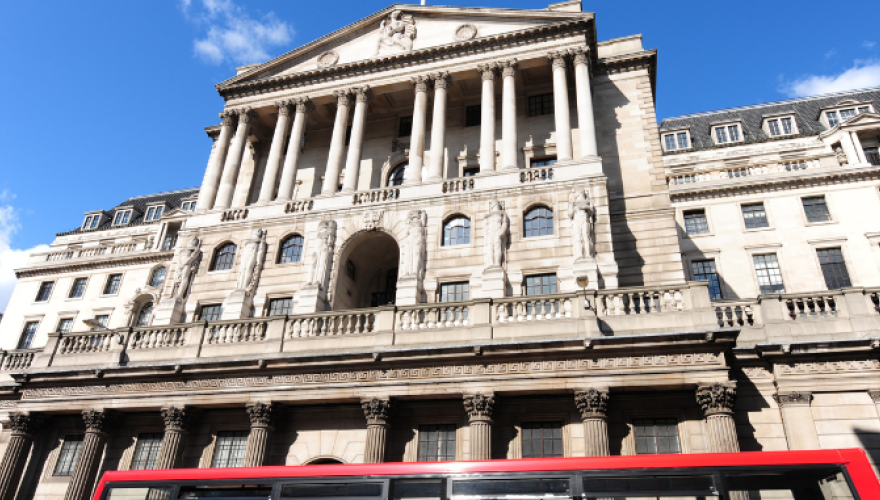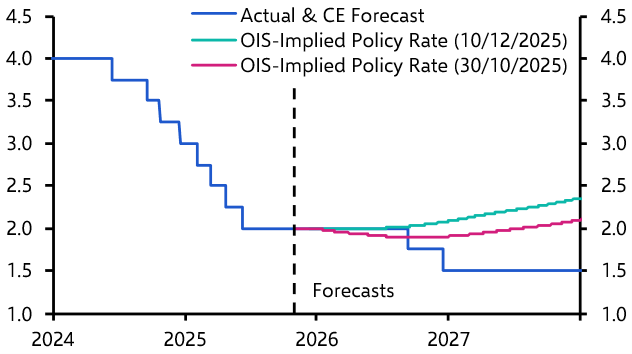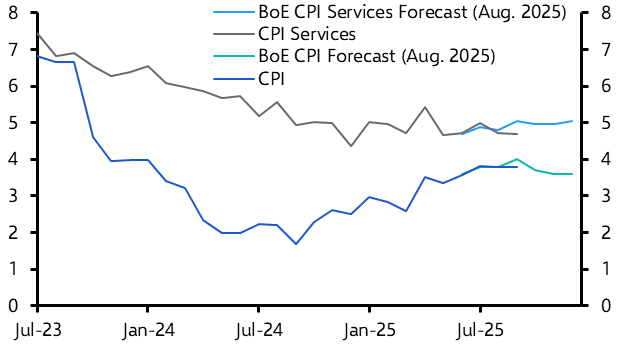
R* and the end of the ultra-low rates era
Several of the structural forces which have weighed on equilibrium interest rates over the past two decades are easing. As AI lifts potential growth and various factors raise desired investment relative to desired savings, we expect equilibrium real rates in advanced economies to rise from the pre-pandemic norm of around 0.5% to as much as 2% in the next ten years. And with inflation set to be a bit higher too, equilibrium nominal rates should settle at between 3% and 4%.
Recent decades have seen a marked decline in equilibrium real interest rates, which were estimated at around 3% on average in advanced economies in the 1990s but just 0.5% by the end of the 2010s. This decline reflected structural forces including slowing potential growth and a large cohort of workers saving for retirement. Equilibrium nominal rates were reduced further as inflation was brought in check.
As monetary cycles near their peak, the key question is not just how far interest rates will fall but where they will ultimately settle. Given the major disruption caused by the pandemic and forthcoming changes including the AI revolution and green transition, we cannot assume that rates will revert to form.
Indeed, there are several good reasons to think that real interest rates (aka R*) have risen and will rise further. For a start, potential GDP growth will be boosted by a pick-up in productivity growth as developments in AI bear fruit (See Chart 1.)
Meanwhile, the deleveraging that weighed on R* after the global financial crisis has run its course and several factors will tip the balance of desired savings and investment in favour of investment. Demographic trends could reduce desired savings as more people retire, and opportunities in AI and the green transition will offer incentives to invest. Also, the pandemic seems to have triggered a permanent rise in government borrowing which will absorb more private savings. This will all cause R* to rise over time. (See Chart 2.)
|
|
|
|
|
|
|
Sources: Refinitiv, Capital Economics |
Sources: Holston, Laubach and Williams historic estimates with CE forecast |
As for inflation, we think that the days of persistent undershoots relative to central bank targets are behind us. Some of the increase in workers’ bargaining power will be sustained and with global fracturing and climate change adding to the pressure, inflation should average around 2% in the next decade.
All of this adds up to a significant increase in equilibrium interest rates in both real and nominal terms relative to the rock bottom levels which prevailed during the 2010s. By country, we see US equilibrium real rates reaching between 1.5% and 2% with the nominal rate around 4% by 2030. Rates elsewhere will be somewhat lower, but still significantly higher than we have become accustomed to. (See Chart 3.)
|
Chart 3: Equilibrium Real Interest Rates (%) |
|
|
|
Sources: Capital Economics, OECD, Holston, Laubach and William |
This means that, notwithstanding near-term fluctuations, bond yields are likely to remain elevated for some time to come. That’s one reason why we think risky asset valuations may be lower over the 2030s than over recent decades, even if enthusiasm around AI pushes equity valuations higher in the interim.
This is a summary of a 40-page report published for Capital Economics clients on 17th October, 2023.

Make informed investment decisions quickly
CE Advance, our new premium product, equips organisations with actionable macroeconomic data and insight to stay ahead of the curve.



